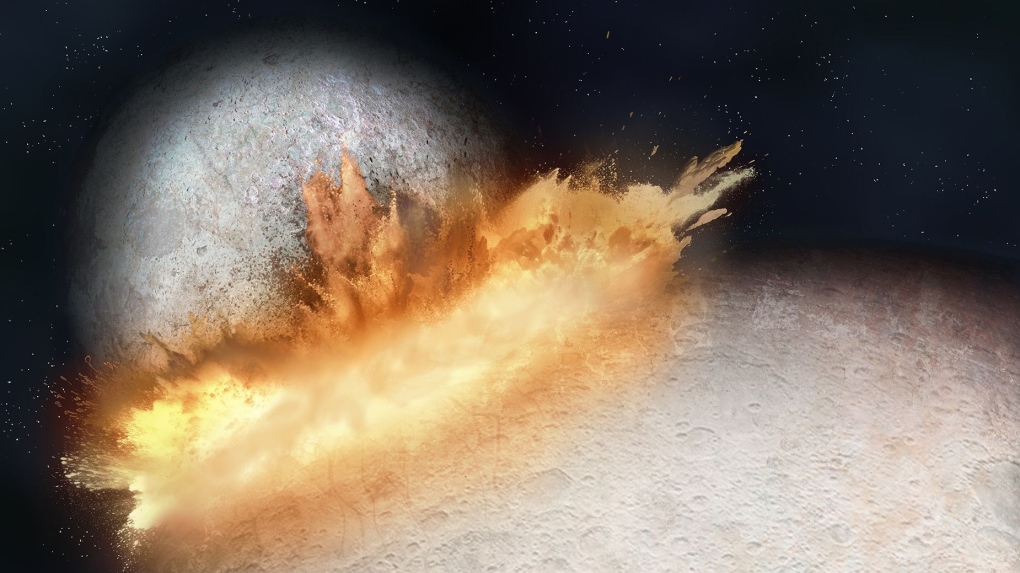Apr 18, 2024
1 min, 12 secs
And for decades, details on Tombaugh Regio’s elevation, geological composition and distinct shape, as well as its highly reflective surface that is a brighter white than the rest of Pluto, have defied explanation.A deep basin called Sputnik Planitia, which makes up the “left lobe” of the heart, is home to much of Pluto’s nitrogen ice.After an analysis involving numerical simulations, the researchers concluded a planetary body about 435 miles (700 kilometers) in diameter, or roughly twice the size of Switzerland from east to west, likely collided with Pluto early in the dwarf planet’s history.“Somewhere beneath Sputnik is the remnant core of another massive body, that Pluto never quite digested,” said study coauthor Erik Asphaug, professor at the University of Arizona’s Lunar and Planetary Laboratory, in a statement.“In our simulations, all of Pluto’s primordial mantle is excavated by the impact, and as the impactor’s core material splats onto Pluto’s core, it creates a local mass excess that can explain the migration toward the equator without a subsurface ocean, or at most a very thin one,” said study coauthor Dr. Martin Jutzi, senior researcher of space research and planetary sciences at the University of Bern’s Physics Institute.“For example, the authors suggest the southern portion of Sputnik Planitia is very deep, but much of the geologic evidence has been interpreted to point to the south being shallower than the north,” Singer said.
Summarized by 365NEWSX ROBOTS
